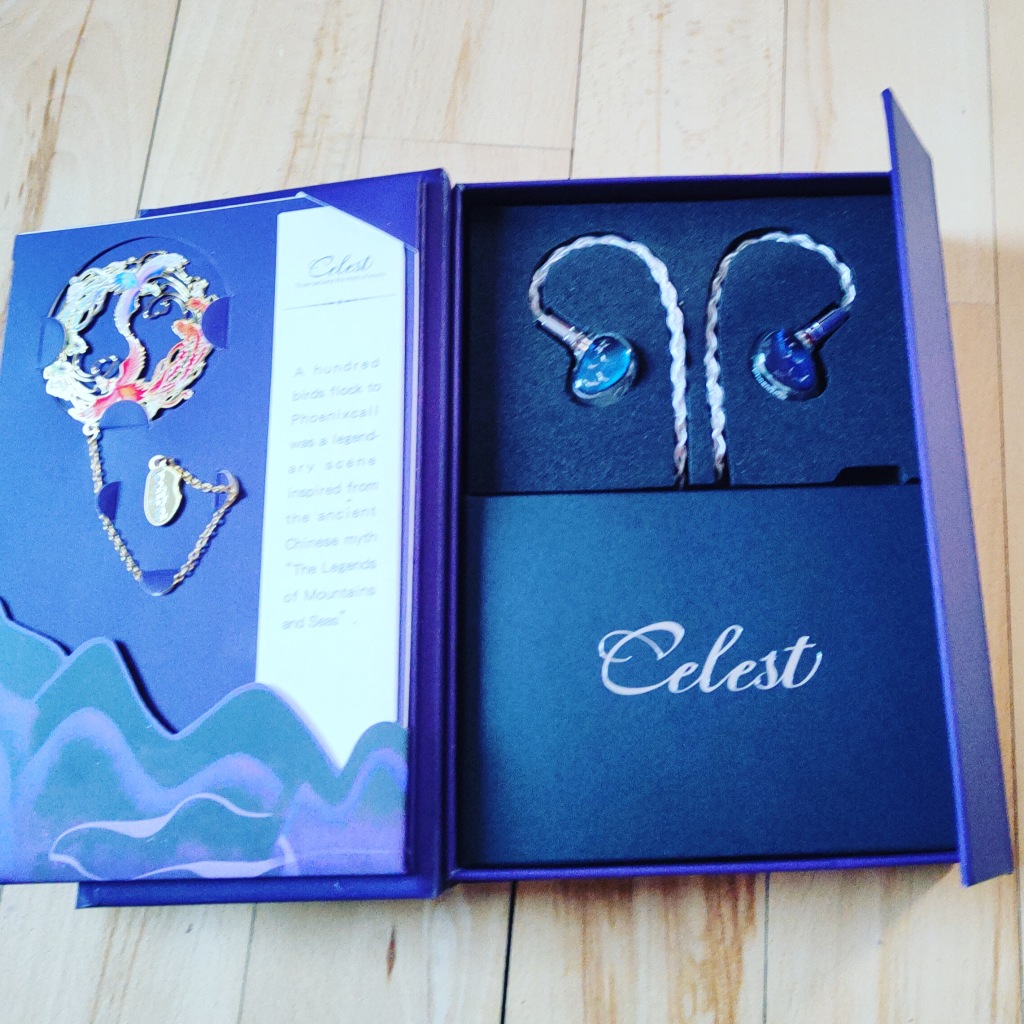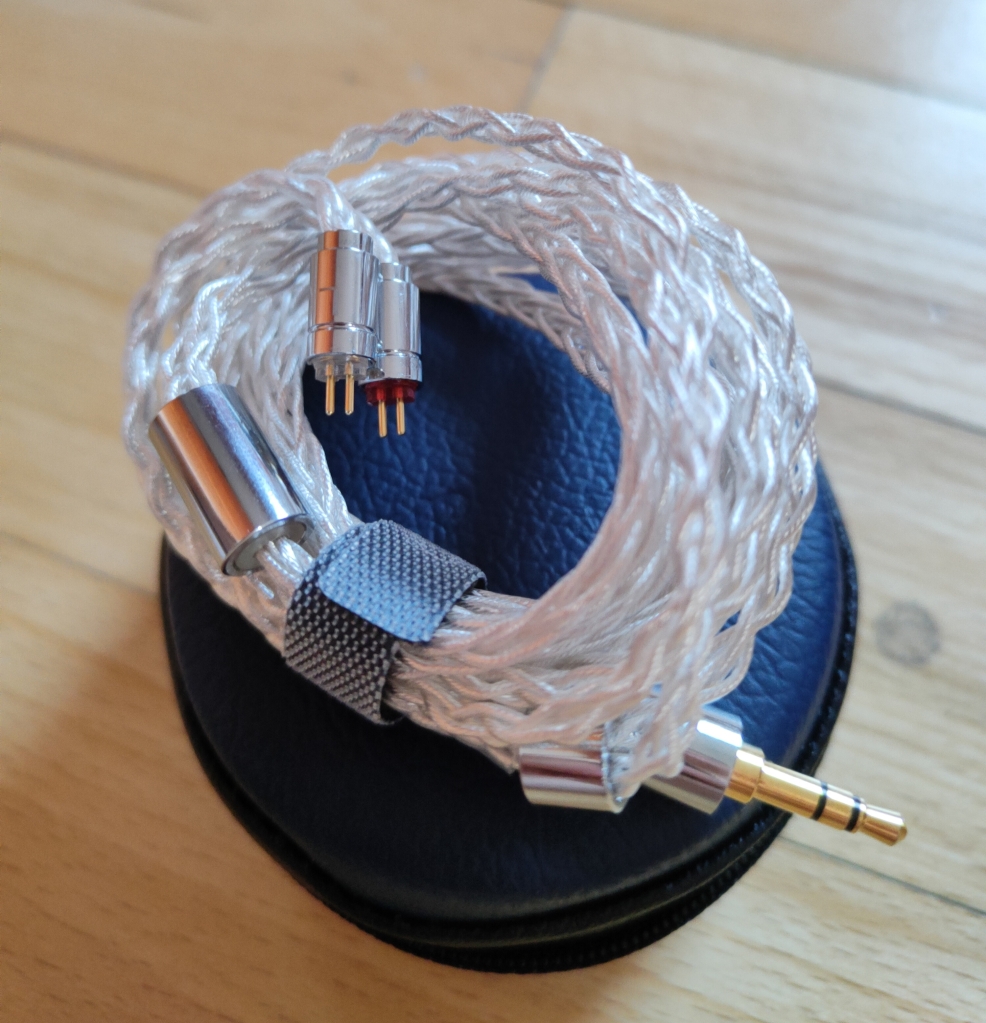
Celest phoenixcall
instagram: LINK
Prelude:
Celest delights again, literally presenting something that I did not expect at all. Belonging to one of the best Asian brands in the field of IEM, the young Celest brand stands for innovative solutions and timeless elegant design. Initial models such as gumitcho and pandamoon were of great quality and very affordable prices. Finally, the celest brand managed to popularize their proprietary F.P.D. transducer. In the PHOENIXCALL model, however, it was decided to completely revolutionize the approach to this solution by creating a tribride with the following configuration. A dynamic driver is responsible for low frequencies, another armature driver for mid-range frequencies, and another armature driver for high frequencies, while two separate dedicated F.P.D. technology drivers with double magnets are responsible for ultra-high frequencies. Additionally, four separate sound tubes and an advanced active and passive crossover system are used. We also took care of beautiful acrylic housings made using 3D printing technology. All in all, there would be nothing extraordinary about it if it weren’t for the price, because this model was valued at only USD 129, which in Poland translates to approximately PLN 599 and can also be purchased in Polish distribution for that amount.

Unboxing:
So let’s take a look at what we get for this amount. The set impresses right from the box stage, unpacking Celest products is always a pleasant experience. This packaging opens like a book, and on the front we are greeted by a beautiful legend and a bookmark with a phoenix motif. Then we have our headphones and solid thick SPC cable. Then we find a leather case made of ecological leather, it is small but very capacious. We also have two sets of tips at our disposal: vocal and balanced.

Ergonomics:
The headphones themselves are not the smallest, but considering the number of transducers they are relatively comfortable, thanks to their excellent profiling. Their weight is really light and I have no problems with using them for a long time. I must admit that they are really well made and very comfortable. I chose the clear variant and what I really liked was the fact that depending on the selected color variant, and we have two of them, the color of the cable itself also changes. The case itself is also interesting because it is very small and fits perfectly in a pocket or a small backpack, thus taking up little space and is made of safe and high-quality materials. The cable itself is one of the best I’ve ever seen in IEM headphones, the only thing missing was replaceable plugs.

Sound:
Now that we know what Celest phoenixcalls look like, it’s time to describe their most important aspect, which is the sound itself. First of all, I would like to start here with a small introduction. It is not easy to make headphones for little money and also surprise the audio world with something. Phoenixcall undoubtedly belongs to innovative headphones, not only taking into account the complicated system inside, but also taking into account tuning.

Bass: Low frequencies are based primarily on a really large amount of high-quality mid-bass. There’s a lot of it and you can hear the rumble of the bass notes. At the same time, it is not aggressive and obtrusive, although there is less lower bass, it is still present, and although I would not call these headphones strictly bass-oriented, the presence of bass and, in particular, its boost in the mid-range is noticeable. We can observe this in many songs based on a stronger bottom end and it is a desired effect, but if there is no such need, the bass is not present and can perfectly convey the field to other sounds. I missed a bit more variety here, but comparing its quality to the price, for USD 129 it is really very good.
Midrange: Despite tuning with a slight U-plane and a slight recess in the midrange, I didn’t notice anything missing, especially the vocals are beautiful, thick and clear. Their color is pure and natural. They are not muddy or overly insulated. What is really impressive is the amount of detail, details are practically everywhere, and individual instruments are perfectly separated from each other, the headphones play on a wide plane with good depth, there are separated layers and a strong technical side. Thanks to proper tuning, the whole thing is not tiring or discouraging. Details are necessary, but their excessive exposure may have the opposite effect to that intended. That’s why I’m glad that celest took this aspect into account and made sure to turn it into an advantage rather than a disadvantage. All in all, when it comes to the midrange, I have no reason to miss anything at this price, ballads and jazz are really impressive.
High tones: High frequencies are what I really like in Celest phoenixcall because they are saturated with information, resolution and have a natural timbre, of course not as natural as more expensive models, but it really is a pleasant presentation, it is not overly boosted, instead it presents a calm character, full of information and details, but not a headache. Try it yourself, especially on songs with many instruments, and you will definitely notice the difference.
Comparisons:
Celest phoenixcall (129USD) VS BQEYZ ATUMN (199USD)
Overall, Atumn is probably the best product BQEYZ has released so far, with an excellent filter system providing three completely different sound signatures. However, when it comes to smoothness of presentation and isolation, the Celest definitely wins here, and the same is true when it comes to the amount of information. Atumn, on the other hand, provide more air and a much wider stage. Both pairs are excellent, Atumn is a great single dynamics, while Celest is a great example of entertaining and smooth playing.
Celest phoenixcall (129USD) VS IBASSO IT01X (129USD)
iBasso is a great company that creates amazing products, they really know how to create great equipment. In the lower frequencies, Celest focuses mainly on mid-bass, while the amount of sub-bass in the IT01X is much greater, the bass in it01X is more punctate, and the bass in the phoenixcalls is more analog. The midrange of the IT01X is the icing on the cake, much more forward than that of the Celesta, while both headphones are remarkably good in midrange, but in a different presentation. Overall, I can’t pick a favorite here, it all depends on our personal preferences.
Summary:
Celest phoenixcall are headphones that are excellent in terms of resolution and amount of detail, you will feel literally enchanted by the amount of information you receive, and nothing will be tiring. Great bass, focusing on the mid-low range. At a price of USD 129, these are excellent headphones not only in terms of sound, but also in terms of the quality of workmanship and the accessories we receive with them. These are headphones that I fully recommend and it is very difficult for me to find any points where I could criticize or question them. If you like details and a natural presentation, you can definitely try Celest phoenixcall.
